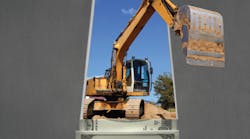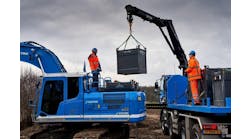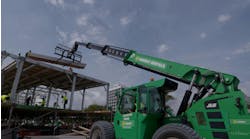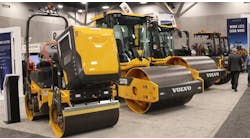This month’s cover story by Gary Stansberry brings up some important points about measuring performance in a variety of areas. If you can measure it, you can improve it. Stansberry aims the story at independent equipment rental companies and how they need to improve various aspects of performance in order to compete against larger, better-funded national players, but the article is of benefit for companies of all sizes that are looking for ways to improve.
Stanberry brings up Billy Beane’s terrific keynote address at the American Rental Association’s February convention. Beane’s story is fairly well chronicled in the book Moneyball by Michael Lewis and the movie with Brad Pitt, and if you haven’t either read the book or seen the movie, I highly recommend both, and you don’t necessarily have to be a big baseball fan to enjoy them and learn the lessons he talks about. In case you are unfamiliar, in a nutshell, Beane talks about keeping the Oakland A’s, a relatively small-market team, competitive with the likes of high payroll teams such as the New York Yankees and Boston Red Sox by taking advantage of unvalued assets and paying attention to key metrics.
One of the companies that effectively measures its performance is United Rentals. I’m sure some will think it’s easy for them to do it, they’ve got money and a big staff, but some of the things United tracks are fairly basic and don’t require a lot of staff. One of the measurements that seems obvious to me is tracking delivery. I remember one of my first visits to a rental company. The owner of that company told me how many customers it had gotten because competitors were continually late on delivery of equipment. New to the industry, I thought “how can you be regularly late on equipment delivery” something so obviously basic and essential?
As I got to know the industry better, I understood well all the reasons equipment could be delivered late, and I realized that to consistently be on time required a lot of attention to detail and a focused commitment to on-time delivery. Customer studies have clearly shown that a customer will understand if a delivery is late and will generally forgive a company if it communicates in advance and lets them know the reason.
Indeed, I came to understand why deliveries are sometimes late, but not how a company can be late and not communicate with the customer. Anyway, United Rentals studied how long it took to deliver equipment on average, then it took an in-depth look at what factors contributed to making deliveries late and set about improving on those areas and lowering its average delivery time.
You don’t have to be a multi-billion-dollar company to shorten delivery times and improve scheduling, not in this era of excellent software currently being utilized by most rental companies, large or small. You don’t have to be a multi-billion-dollar company to figure out how to communicate with a customer if a delivery is going to be late — all you need is a mobile phone — something everybody in this industry has.
Some of the measurements that Stansberry talks about in his article, such as utilization, or looking at disposal of a piece of equipment once revenue triples original equipment cost, do not require a huge company to be able to measure. Another measurement he talks about is the amount of time pieces of equipment are off-rent and unavailable — either because they are awaiting pickup from a job, or awaiting inspection or repair. If you can measure how much time that is taking, you can lower the time off-rent.
Another important area Stansberry writes about is the performance of rental sales staff out in the field, and measuring how many sales calls are made in a day or a week or a month. You can make hundreds of sales calls, but if your salespeople don’t communicate effectively, they won’t be successful. Assuming your sales staff is even average in their communication capability — and that’s another area to look at — quantity does matter, and that is something you can also measure.
On these, and so many other areas of your company’s performance, you already have the tools to measure. The current software being offered by suppliers to the rental industry offer a lot of diagnostic capability, which is why you don’t have to be a huge outfit to measure performance. You just have to have the will to get better at what you do. And I know most of you have that.






